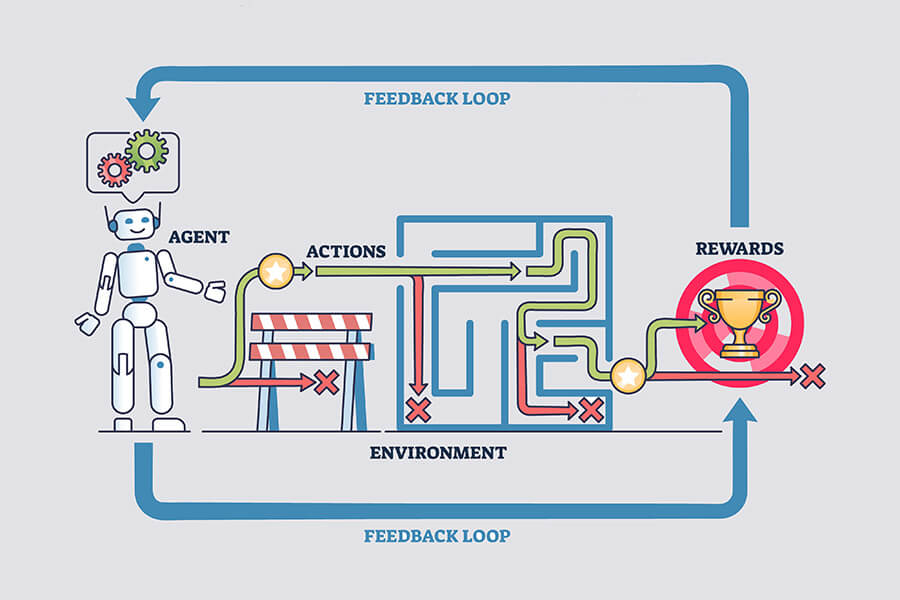The shift to remote work has been unprecedented, with a Gallup report stating that in 2021, approximately 43% of employed adults in the United States worked remotely at least some of the time. This significant change underscores the need for effective strategies to manage and scale remote teams efficiently.
Rapidly scaling remote teams presents unique challenges, from maintaining team cohesion to ensuring seamless communication. However, with the right approaches, businesses can not only overcome these hurdles but also unlock new opportunities for growth and innovation.
By implementing proven strategies, organizations can scale their remote teams, enhancing productivity and driving success in an increasingly remote work landscape.
The Remote Work Revolution: Why Scaling Matters Now
As the world shifts towards remote work, the ability to scale development teams efficiently has become a critical factor for success. The remote work revolution is not just a trend; it’s a fundamental shift in how businesses operate. Companies that adapt quickly are reaping the benefits.
The Accelerated Shift to Remote Work
The COVID-19 pandemic has accelerated the shift to remote work, forcing companies to adopt flexible work arrangements at an unprecedented rate. According to recent statistics, remote work has increased by over 50% in the past year alone. This rapid shift has brought numerous challenges, but it has also created opportunities for businesses to rethink their operations and become more agile.
As technology continues to advance and more employees demand flexibility, the shift towards remote work is likely to continue. Companies that can effectively scale their remote teams will be better positioned to capitalize on this trend.
The Competitive Advantage of Effective Remote Scaling
Scaling remote teams effectively can provide a significant competitive advantage. By leveraging a global talent pool, businesses can access the best skills and expertise, regardless of geographical location. Effective remote scaling also enables companies to respond quickly to changing market conditions, innovate more rapidly, and improve customer satisfaction.
Moreover, companies that master remote team scaling can achieve greater operational efficiency, reduce costs, and drive growth. As the remote work revolution continues to gain momentum, the ability to scale remote teams will become an increasingly important differentiator in the competitive landscape.
Strategies for Rapidly Scaling Remote Teams
To stay competitive, businesses must adopt proven strategies for scaling their remote teams efficiently. Rapid scaling requires a thoughtful approach that encompasses clear communication, a culture of alignment, and the right technology stack.
Strategy 1 Deep Dive: Creating Communication Excellence
Communication excellence is the foundation upon which high-performing remote teams are built. As teams scale rapidly, the complexity of communication increases, making it crucial to establish effective practices from the outset.
Asynchronous vs. Synchronous Communication
Understanding the difference between asynchronous and synchronous communication is vital for remote teams. Asynchronous communication, such as email or project management tools, allows team members to respond at their convenience, reducing the need for immediate responses and enabling work across different time zones. Synchronous communication, such as video calls, is crucial for facilitating real-time discussions and promoting team cohesion.
Striking a balance between these two modes is key. For instance, using asynchronous communication for updates and synchronous communication for brainstorming sessions or critical discussions can optimize team productivity.
Documentation Best Practices
Adequate documentation is a cornerstone of communication excellence. It ensures that information is accessible, reducing misunderstandings and the need for repetitive explanations. Best practices include maintaining a centralized knowledge base, using clear and concise language, and regularly updating documents to reflect the latest information.
Tools like Notion or Confluence can be invaluable in creating and managing documentation. Training team members on documentation best practices can significantly enhance collaboration and efficiency.
Overcoming Time Zone Challenges
Time zone differences can be a significant hurdle for remote teams. To overcome this, teams can adopt flexible working hours, allowing members to overlap their workdays, thereby increasing productivity to some extent. Utilizing time zone-friendly tools, such as World Time Buddy, can help schedule meetings that accommodate all team members.
Recording meetings and making them available for later viewing can also ensure that team members who cannot attend in real-time stay informed and up to date. By implementing these strategies, remote teams can mitigate the challenges posed by geographical dispersion.
Even better, you can outsource to nearshore software development companies like Coderio. We have experienced development teams that work in time zone alignment with the US.
Strategy 2 Deep Dive: Fostering Alignment Across Remote Teams
Alignment is the backbone of any successful remote team, enabling them to work cohesively towards common goals. Fostering this alignment requires a multifaceted approach that encompasses various aspects of team dynamics and operations.
Engineering and Product Alignment Techniques
Engineering and product alignment are critical in ensuring that the development process is streamlined and focused on delivering value to the customer. Techniques such as regular sync-ups between engineering and product teams, utilizing collaborative project management tools, and establishing clear product roadmaps facilitate this alignment.
Moreover, adopting practices like OKRs (Objectives and Key Results) can significantly enhance alignment by providing a clear direction and measurable outcomes for both teams and individuals.
Cultural Fit in a Remote Environment
Cultural fit is vital for remote teams, as it influences how team members interact with one another and how they embody the organization’s values. In a remote setting, it’s essential to foster an inclusive culture, promote open communication, and encourage collaboration.
Organizations can achieve this by implementing virtual team-building activities, setting clear cultural expectations, and leading by example from the top management.
Building Trust Without Face-to-Face Interaction
Trust is the glue that holds remote teams together. Building trust without face-to-face interaction requires deliberate effort, such as being transparent in communication, following through on commitments, and showing empathy towards team members.
Regular virtual check-ins, feedback sessions, and celebrating team successes also play a crucial role in fostering trust among remote team members.
Strategy 3 Deep Dive: Essential Tools and Technologies
The key to rapidly scaling remote teams lies in leveraging essential tools and technologies effectively. As teams expand, the complexity of managing tasks, communication, and collaboration increases. Implementing the right technology stack is crucial for streamlining processes and maintaining productivity.
Collaboration and Project Management Platforms
Effective collaboration is the backbone of any successful remote team. Platforms like Asana, Trello, and Jira have become indispensable for managing projects and tasks. These tools enable teams to organize work, track progress, and meet deadlines. By adopting a robust project management platform, remote teams can enhance transparency and accountability, ensuring that everyone is aligned with the project goals.
Virtual Team Building Solutions
Building a cohesive team culture is challenging when team members are geographically dispersed. Virtual team-building solutions such as Slack, Microsoft Teams, and Zoom facilitate communication and foster a sense of community. These platforms offer features like video conferencing, instant messaging, and file sharing, which are essential for maintaining a connected and engaged team. Regular virtual team-building activities can also strengthen bonds among team members.
Security and Compliance Considerations
As remote teams scale, ensuring the security and compliance of data becomes paramount. Implementing robust security measures such as multi-factor authentication, encryption, and secure VPNs is crucial. Compliance with regulatory standards, such as GDPR and HIPAA, must also be maintained. By prioritizing security and compliance, organizations can protect sensitive information and maintain trust with their clients and stakeholders.
Conclusion: Transforming Remote Team Scaling from Challenge to Opportunity
As organizations continue to navigate the complexities of remote work, the ability to scale remote teams efficiently has become a critical factor in achieving success. By implementing the three strategies outlined—establishing clear communication protocols, building a culture of alignment and accountability, and implementing the right technology stack—businesses can transform remote team scaling from a challenge into a catalyst for growth.
Effective remote team scaling enables companies to tap into a global talent pool, drive innovation, and respond quickly to changing market conditions. By leveraging these strategies, organizations can overcome common remote team challenges, such as communication breakdowns and cultural misalignment, and unlock new opportunities for collaboration and productivity.
As the remote work landscape continues to evolve, businesses that master the art of scaling remote teams will be well-positioned to capitalize on emerging trends and stay ahead of the competition. By transforming remote team scaling into a strategic advantage, organizations can achieve greater agility, improve employee engagement, and drive long-term success.








